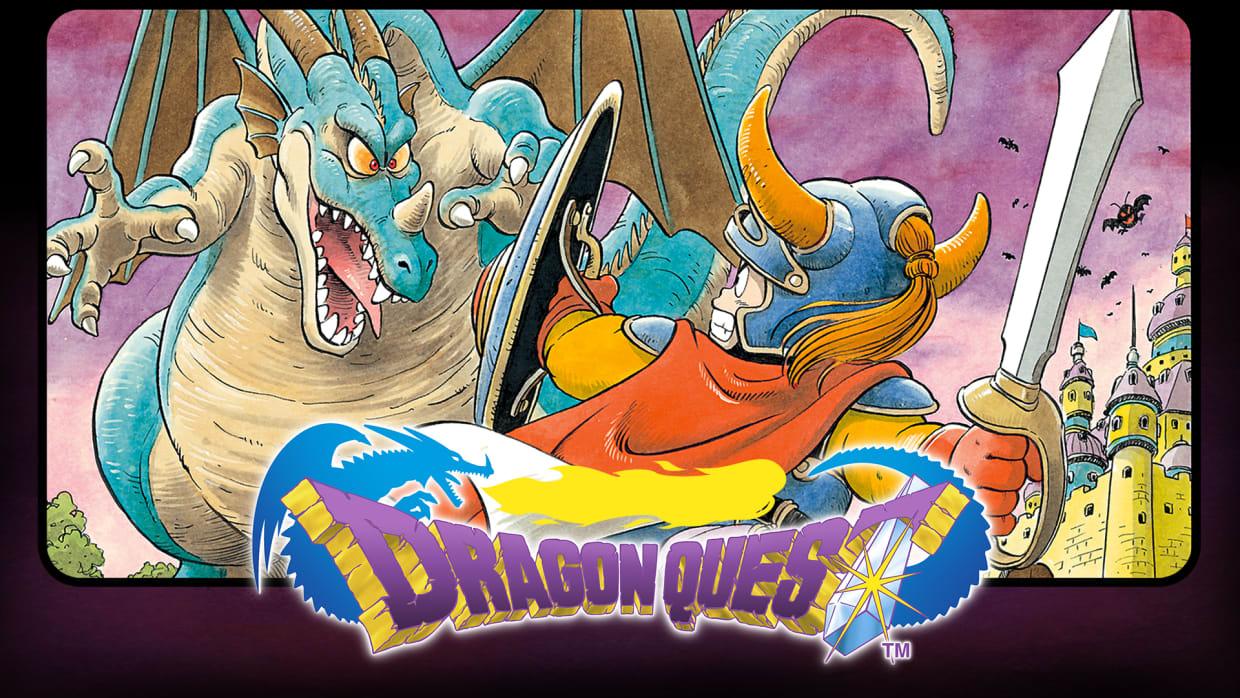
Father of JRPGs
Since my childhood, Dragon Quest has always been one of the series where I find peace in my retro gaming journey, thanks to the comfort of returning to familiar places with each new main game and the excitement that comes from the ever-changing new worlds. Created by Yuji Horii in 1986, and with incredible art design by Akira Toriyama, the Dragon Quest series has remained one of the rare game series to stay true to its roots while continuously pushing the boundaries with each of its 11 main games.
Each main game in the series has successfully introduced innovations that set the standard for the JRPG genre. As a pioneer of the JRPG genre, it’s fascinating to discuss why this series has remained so beloved and popular not only in Japan but also in the West for over 30 years.
Innovation Without Losing Tradition
Dragon Quest XI takes this tradition to the highest level, blending the classic Dragon Quest formula with fresh, rich content, offering a masterclass on how to evolve a series without compromising its roots.
The Dragon Quest series has always been a testament to the idea that a game can evolve while staying true to its roots. From its humble beginnings in 1986 to the grand adventure of Dragon Quest XI, the franchise has introduced countless innovations while maintaining the essence of classic RPG storytelling. Each mainline entry has added something unique to the formula, refining and expanding upon what came before.
With Dragon Quest XI: Echoes of an Elusive Age, the franchise reached a new pinnacle of blending tradition with innovation, modernizing visuals, combat, and storytelling while preserving the spirit that has defined the series for over three decades. To understand how Dragon Quest XI achieves this delicate balance, let’s take a journey through the history of Dragon Quest, highlighting what made each installment special and how they contributed to the evolution of the series.
Dragon Quest (1986)
The original Dragon Quest (or Dragon Warrior in North America) laid the groundwork for the entire Japanese RPG genre. While simple by today’s standards, it introduced key elements that would define the franchise: a turn-based battle system, an expansive overworld, and a grand adventure about a lone hero facing an evil threat. It started the Erdrick trilogy, and the first three games showed us tons of story and gameplay mechanics that shaped the JRPG genre.It took inspiration from Western RPGs like Ultima and Wizardry but made the experience more accessible, turning it into a household name in Japan.
What It Brought: The foundation of the turn-based RPG system, an open-world adventure, and a hero’s journey.
Dragon Quest II Luminaries of the Legendary Line (1987)
While the first game focused on a single hero, Dragon Quest II introduced a party system, allowing players to recruit multiple characters with unique abilities. The world was significantly larger, offering ship travel and more varied environments. This installment set the precedent for Dragon Quest’s approach to world-building and party-based combat.
What It Brought: Multi-character party system, ship travel, a larger world to explore.
Dragon Quest III: The Seeds of Salvation (1988)
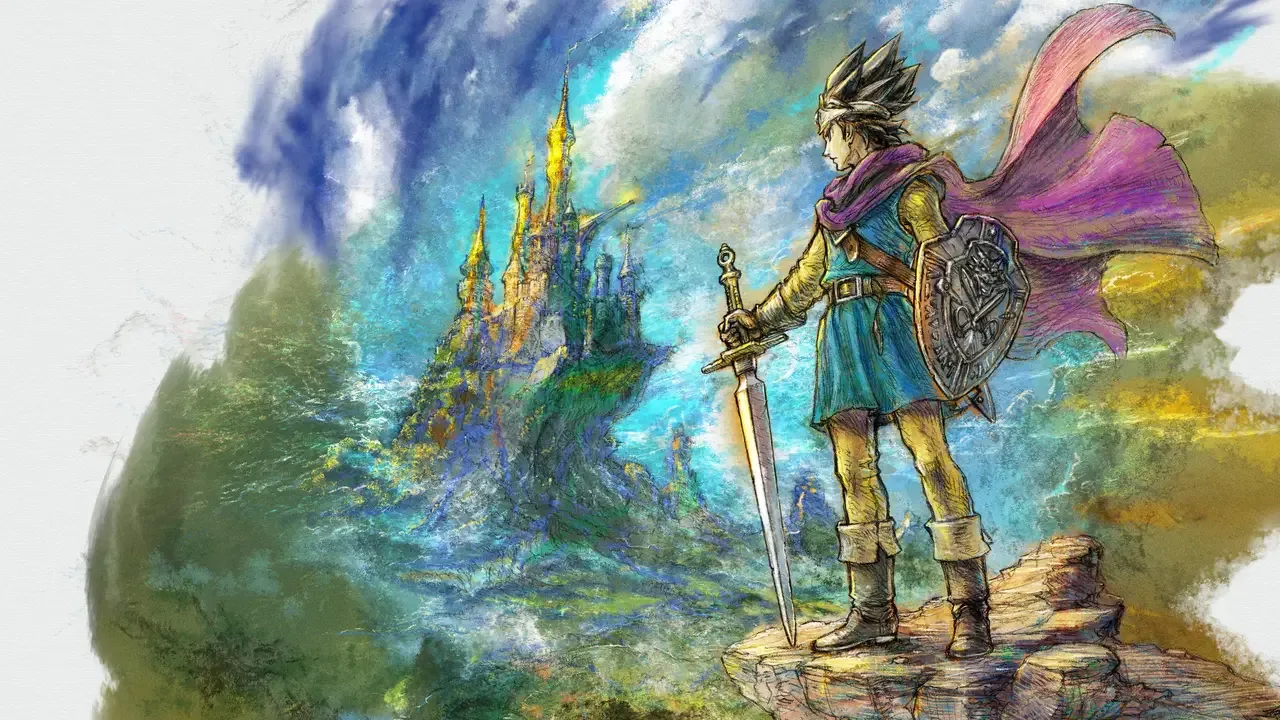
Considered one of the greatest RPGs of all time, Dragon Quest III introduced a job system that allowed players to customize their party’s classes. It also featured a non-linear world where players could explore at their own pace. The day-and-night cycle added immersion, making towns and enemy encounters feel more dynamic.Currently has hd-2d REMAKE AND its a perfect from tom experience Erdrick’s Adventure.
What It Brought: A job system for character customization, a non-linear world, and a dynamic day/night system.
Dragon Quest IV Chapters of the Chosen (1990)
Dragon Quest IV was revolutionary for its chapter-based structure. Instead of starting with the hero, players first experienced the journeys of different characters, each with their own stories, before uniting them for the final act. This made the world feel alive, with each character bringing unique motivations to the party.You can create bonds with the charachhters as a player and during the final act you as hero acting and fightnig with digital bond with your companion.
What It Brought: A multi-chapter storytelling format, diverse playable characters with unique perspectives.
Dragon Quest V: Hand of the Heavenly Bride (1992)
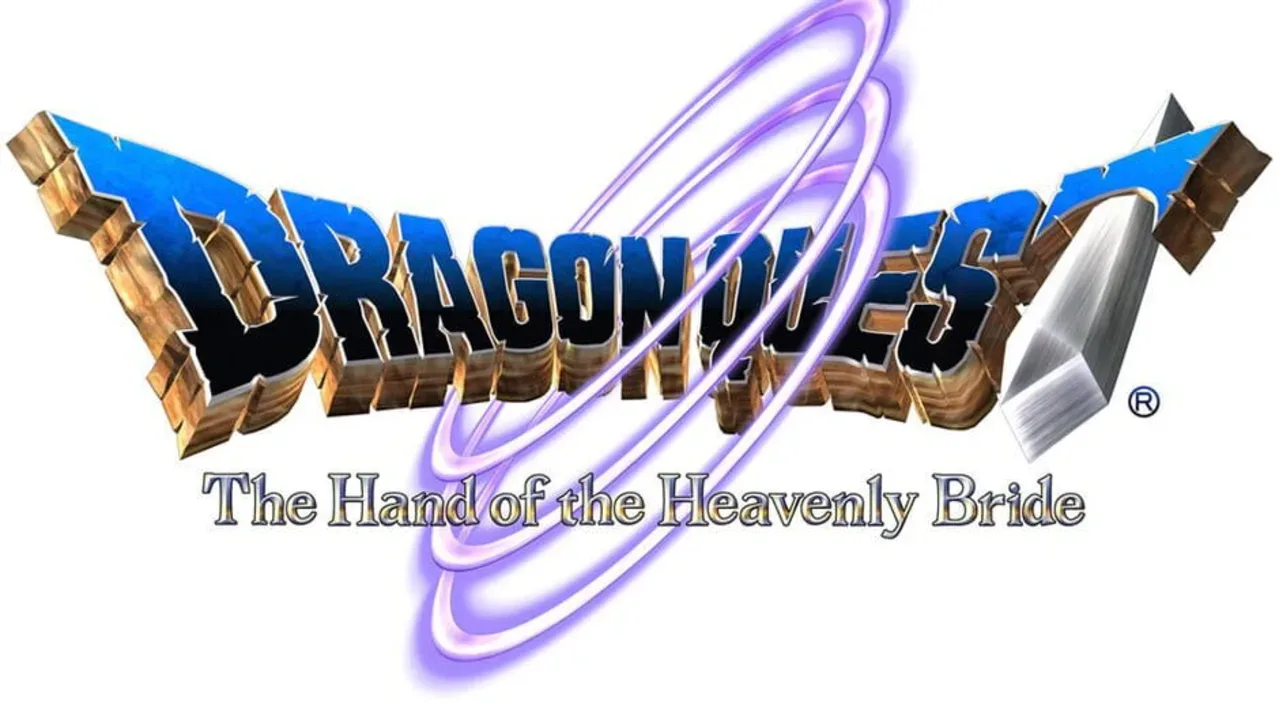
My personal favorite and perhaps the most emotional Dragon Quest game, Dragon Quest V didn’t just tell a story—it let players live one. Instead of just following a hero’s journey, players experienced an entire life cycle, from childhood to adulthood, marriage, and even raising children who joined the adventure. It was a deeply personal experience, making it one of the most beloved entries in the series. Traditional game mechanics with deep and rich content, Dragon Quest V is an exceptional experience for the JRPG genre.
What It Brought: A generational story where the player grows up, marries, and raises children, monster recruitment.
Dragon Quest VI Realms of Revelation (1995)
Dragon Quest VI introduced a dual-world system, where players explored both the real world and a dream-like parallel realm. This allowed for creative storytelling, puzzle-solving, and world-building, adding an extra layer of depth to the classic Dragon Quest formula.A lot of games with different genres use the same mechanic such as Mario Luigi series, dragon quest vi also great sample for without changing and dividing core values of dragon quest and put new mechanics.
What It Brought: A dual-world system, deep narrative exploration, an expanded class system.
Dragon Quest VII Fragments of the Forgotten Past (2000)
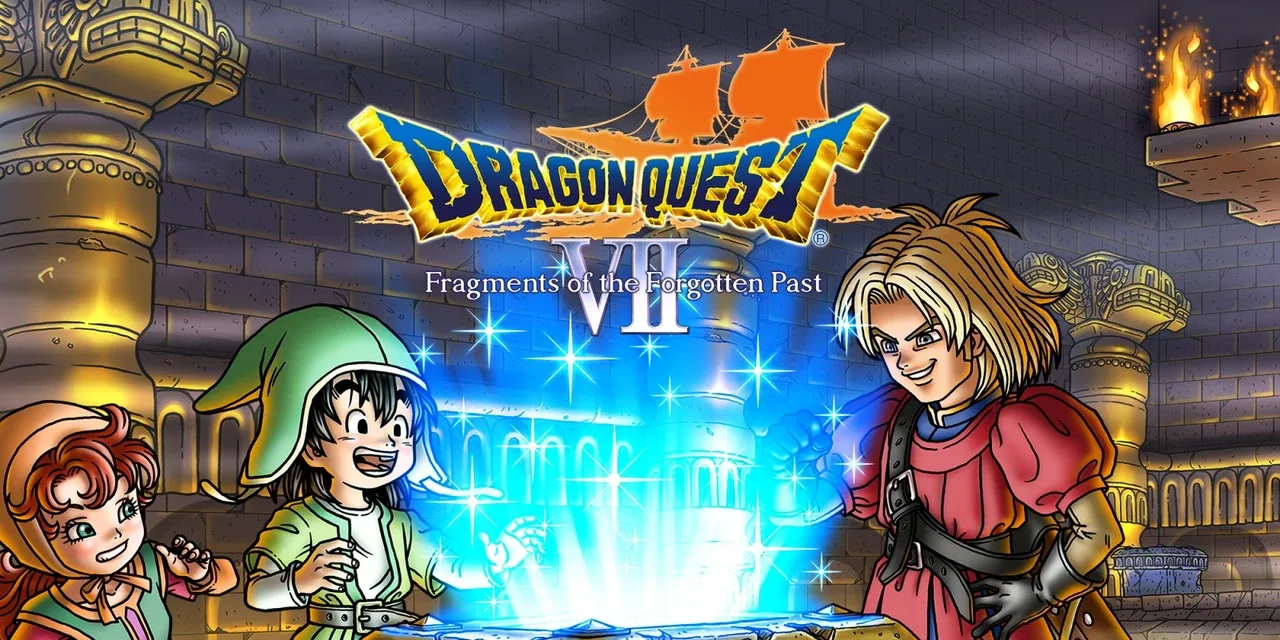
One of first dragon quest game for the western with Dragon Warrior game with PS1 version, Dragon Quest vii is the on of longest playtimes in the series, Dragon Quest VII introduced a unique storytelling approach centered around time travel. Players pieced together the world’s history by unlocking islands from the past, solving mysteries that shaped the present. This approach turned the game into a giant puzzle, rewarding exploration and careful attention to detail.The 3DS version of Dragon Quest VII improves upon the PS1 version with faster combat, streamlined gameplay, and new content such as additional storylines and bonus dungeons. It also features a refined localization with updated dialogue, improved accessibility with autosave and a better in-game map.Additionally, the 3DS version includes voice acting in key scenes, further enhancing the immersive experience.
What It Brought: A time-traveling story structure, deep lore-building, a vast job system.
Dragon Quest VIII Journey of the Cursed King (2004)
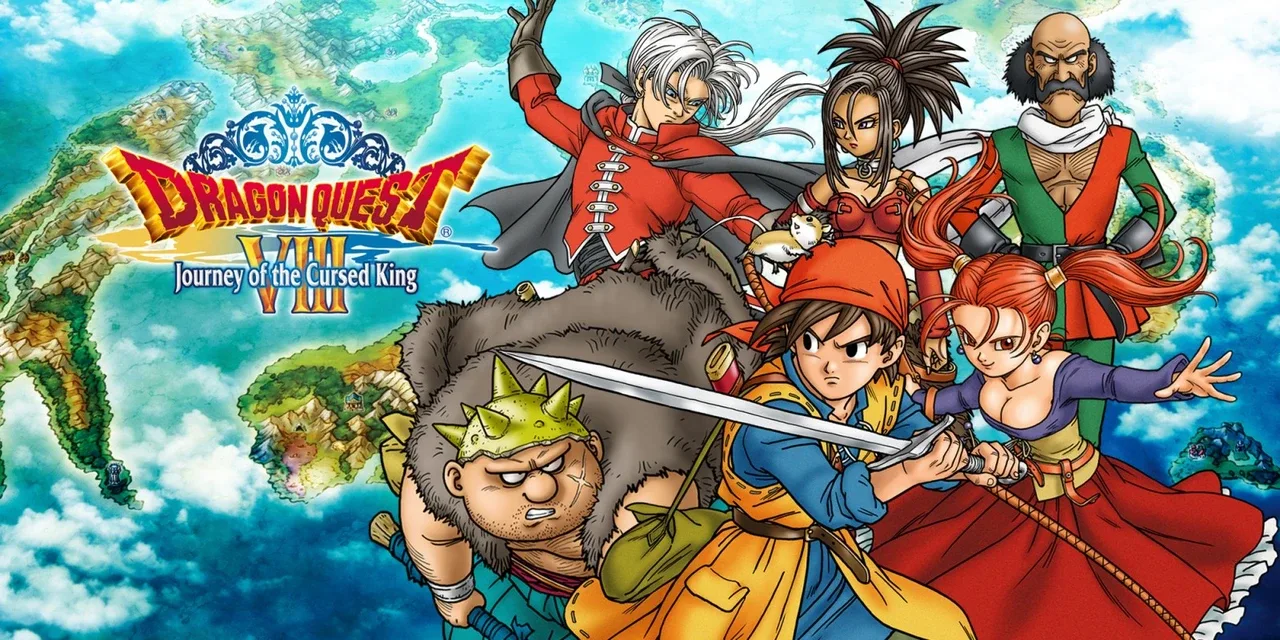
For the first time, Dragon Quest embraced full 3D environments, creating a massive world to explore. Its also first dragon quest name on mainline game on west and one of greatest games of PS2. A lot of players outside of Japan actually meet dragon quest with dragon quest viii and with the unique charachters, brilliant story telling,Dragon Quest VIII set a new standard for the series with voice acting, a cinematic presentation, and a more immersive overworld. It still retained its turn-based roots but felt like a modernized adventure. 3DS version is the best version to experience alon with all modernize settings options and impressive visuals perforamnce on the handheld console.
What It Brought: A fully 3D open world, voice acting, cinematic storytelling.
Dragon Quest IX Sentinels of the Starry Skies (2009)
Dragon Quest IX was designed with multiplayer in mind, allowing players to team up and explore dungeons together. It also introduced extensive character customization, making the adventure feel more personal. While it was a handheld-exclusive, its co-op play and deep post-game content made it a unique entry in the franchise.Exclusively for the Nintendo DS, it was a bold move from Square Enix, and it received positive feedback. The game used the DS touch screen very well and is still worth the try if you have friends to explore and enjoy the massive world.
What It Brought: Multiplayer co-op, deep customization, extensive post-game content.
Dragon Quest X (2012)
For the first time, Dragon Quest went online, turning into a full-fledged MMORPG. While it retained the series’ classic aesthetic and turn-based roots, it was an ambitious departure from the traditional formula. Despite being Japan-exclusive for most of its lifespan, it remains a beloved and evolving part of the franchise. Even the Wii U has the DQX version, and with some fan-made options, you can experience it in the West. However, I hope Square Enix releases the game in the West, and we can officially experience DQX in the future.
What It Brought: Online multiplayer RPG mechanics, real-time world events.

The Perfect Balance of Tradition and Evolution
Dragon Quest XI: Echoes of an Elusive Age is a masterstroke in the world of role-playing games. Along with Dragon Quest V, it’s my personal favorite and a reminder of why I love RPGs and JRPGs.
From its vibrant world-building to its unforgettable characters and dynamic combat systems, it stands as one of the most impressive titles in the series, blending modern innovations with the essence of what made Dragon Quest so special in the first place. Whether you’re a long-time fan of the series or a newcomer, Dragon Quest XI has something for everyone, creating an immersive experience that is both nostalgic and refreshingly new.
What It Brought: Happiness!
An Amazing Gameplay Experience

At the heart of Dragon Quest XI lies its gameplay, which has been meticulously designed to offer a rewarding experience for both casual and hardcore RPG players. From the moment players take control of the Luminary, the game pulls them into a world that feels alive with possibilities. The core mechanics of Dragon Quest XI remain faithful to the series’ turn-based roots, but they are elevated with new features that make every encounter more engaging.
The battle system remains as satisfying as ever. While Dragon Quest is known for its classic turn-based combat, Dragon Quest XI adds layers of depth through strategic elements like the Tactical and Pep Powers systems. The inclusion of the Tactical mode allows players to adjust the behavior of their party members, which can make a significant difference in difficult battles. Additionally, the Pep Powers add a layer of excitement and unpredictability to combat. When party members reach their Pep state, they can combine their powers to unleash devastating special attacks, adding a sense of camaraderie and thrill to each encounter.
Dynamic Combat Choices also keep the gameplay fresh. The option to switch between classic and modern battle setups, including the use of the Zoom feature to fast travel to previously visited locations, ensures that the gameplay doesn’t feel stale over time. Moreover, the game’s exploration is far from monotonous, with vibrant towns and dungeons that are filled with secrets, treasures, and surprises.
A Rich Environment

The world of Dragon Quest XI is truly one of its greatest assets. The environments are breathtakingly beautiful, with the developers making a clear effort to create a world that feels both lived-in and expansive. From the rolling plains of the open world to the towering castles and dungeons, Dragon Quest XI offers a wide variety of settings, each with its own distinct character.
The game’s map design is one of the most impressive elements of the experience. The world of Dragon Quest XI is vast and varied, but it’s never overwhelming. The layout encourages exploration while still maintaining a clear sense of direction. The land is filled with locations to visit, from bustling cities and picturesque villages to dangerous dungeons and hidden caves. The world map feels connected, with landmarks and townships visible from one place to the next, offering a sense of scale and continuity that few RPGs manage to achieve.
One of the most striking features of the world design is its ability to change based on the player’s choices and progress in the story. As the Luminary and his companions progress through the narrative, the environment reacts and transforms, reflecting the consequences of their actions. Towns, dungeons, and even landscapes shift, adding a layer of immersion that ensures the world feels alive and responsive.
A Deep and Intricate Story

The main story of Dragon Quest XI is both heartwarming and epic, blending the personal with the grandiose. It centers around the Luminary, the chosen hero, who must defeat the dark forces threatening the world. However, what sets Dragon Quest XI apart from many other RPGs is its storytelling. The plot is more than just a typical save-the-world story; it’s deeply personal, exploring themes of legacy, friendship, and fate.
The narrative unfolds at a deliberate pace, allowing players to become truly invested in the world and the characters. The hero’s journey isn’t just about defeating enemies—it’s about uncovering the mystery of the Luminary’s past and grappling with what it means to carry the weight of such a legacy. Along the way, players meet a cast of incredibly rich characters, each with their own motivations and arcs.
The emotional resonance of the story is further enhanced by the game’s side stories. The character-driven subplots are more than just simple fetch quests; they add layers of emotional depth to the game. Each party member has their own personal quest that allows the player to learn more about them and their backgrounds. These side stories often provide emotional moments that help develop the characters’ relationships and grow the narrative in unexpected ways.
One of the highlights of Dragon Quest XI is the way it handles its pacing. While the game never rushes the player, it strikes a balance between exploration, combat, and story beats, ensuring that the journey is both exciting and rewarding. The twists and turns in the plot don’t just come from plot developments but also from the way the world reacts to the player’s actions and the passing of time.
Incredible Characters!

No RPG is complete without a cast of compelling characters, and Dragon Quest XI is no exception. Each character is well-developed and brings something unique to the table, both in terms of gameplay and story. The party consists of:
- The Luminary: The player-controlled hero whose journey is one of self-discovery and growth. Unlike many RPG protagonists, the Luminary’s personality is largely shaped by the player, allowing for a more personal connection.
- Veronica and Serena: Twin sisters with contrasting personalities, Veronica is a fiery mage, and Serena is a kind-hearted healer. Their sibling dynamic is heartwarming, and their backstories are among the most emotionally impactful in the game.
- Erik: A rogue with a troubled past, Erik brings a sense of humor and a deeper sense of complexity to the group. His past is explored throughout the game, and his bond with the other characters is a highlight.
- Rab: A wise old sage who serves as both a mentor and comic relief, Rab is a character with great depth. His age and experience offer a unique perspective on the story.
- Jade: A strong-willed warrior who balances strength with vulnerability, Jade’s backstory adds to the richness of the character lineup.
Each of these characters brings something vital to the group, and their interactions are genuine and heartfelt. The game’s strong character development ensures that the player becomes emotionally invested in each one, making their journeys just as important as the hero’s.
Strategic Combat and Enemy Variety

The combat system in Dragon Quest XI is one of the most strategic in the series. While the game sticks to traditional turn-based battles, it introduces numerous tactical elements that keep things fresh. Players are required to think about positioning, the use of different skills, and how to exploit enemy weaknesses in every battle.
One of the standout features is the monster and enemy variety. The world of Dragon Quest XI is filled with an incredible array of creatures, each with its own unique abilities and weaknesses. The monsters are designed with care, each one contributing to the feel of the world. Whether it’s the whimsical slimes or the terrifying dragons, the monsters add to the charm and difficulty of the game.
The way enemies are integrated into the world also adds to the game’s depth. In Dragon Quest XI, monsters can be seen in the environment before engaging in battle, allowing players to avoid or strategically plan their encounters. The game also introduces monster medals, which can be used to summon monsters to fight on the player’s behalf in combat. This mechanic adds a strategic layer, as players can experiment with different combinations to find the most effective setups.
A Vast and Rewarding Journey

The world of Dragon Quest XI is large, but it never feels empty. The world is brimming with secrets, treasures, and activities that ensure there’s always something to do. Whether it’s hunting down rare monsters, solving puzzles, or taking on challenging side quests, the game ensures that the journey is never short on content. Additionally, the crafting system allows players to create powerful gear, further personalizing their experience.
The game’s post-game content is equally impressive, providing players with additional quests, dungeons, and challenges that will test their skills. It’s clear that Dragon Quest XI was designed with replayability in mind, ensuring that the journey doesn’t end when the credits roll.
Video game series, much like societies, are organic products that must adapt to change. However, this evolution doesn’t need to strip away the core elements that made the series great in the first place. The success of Dragon Quest lies in how it adapts while staying true to its roots, and with Dragon Quest XII on the horizon, the series continues to prove that it can evolve while maintaining its timeless appeal.

Description
Dragon Quest XI masterfully blends everything that made the series beloved and iconic, elevating these elements to new heights. With its unforgettable characters, engaging story presentation, deep gameplay systems, and one of the best endgame contents ever crafted, it stands as one of the greatest RPGs of all time.Positives
- End Game Content
- Storytelling
- Characters
- Strategic Turn-Based Gameplay
- Soundtrack & Voice Performance
- Detailed Open World
Negatives
- The variety of customizable outfits could have been a bit more extensive.
Review Breakdown
- Gameplay & Content 5/5
- Soundtrack & Voice Performance 5/5
- Story & Storytelling 5/5
- Visuals & Graphics 5/5

